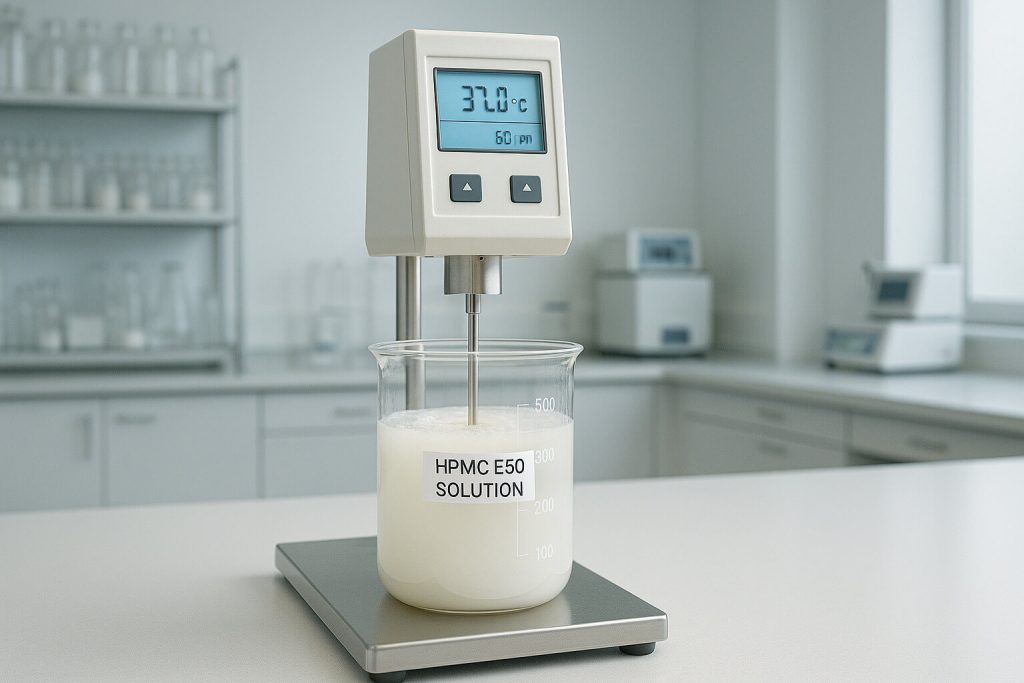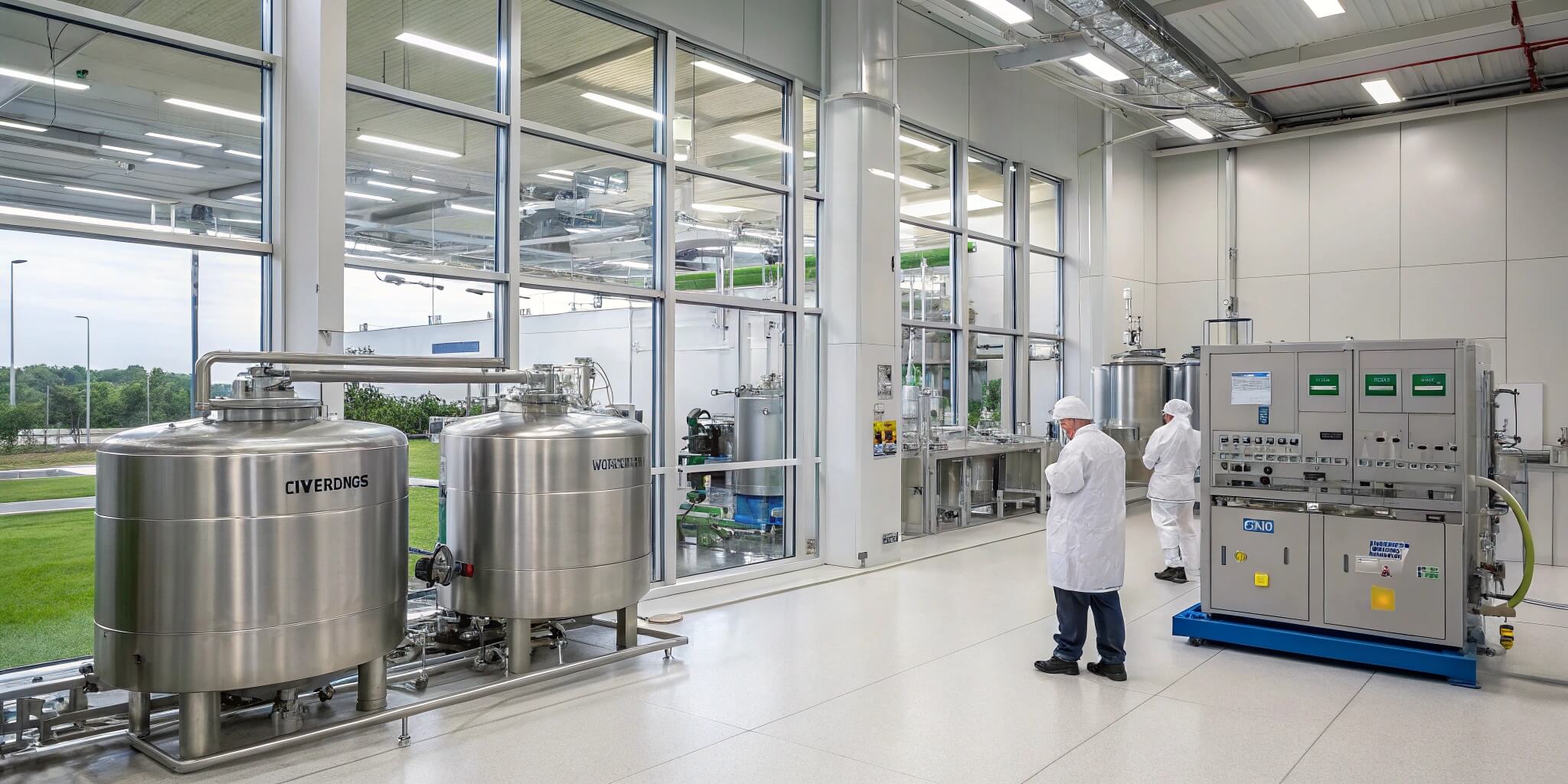Selecting the right hydroxypropyl methylcellulose (HPMC) grade for pharmaceutical applications presents a significant challenge for formulation scientists and purchasing managers. With numerous grades available—including E3, E5, E6, E15, E50, E4M, K4M, K100, and K100M—each offering distinct properties and performance characteristics, making the optimal choice requires careful consideration of your specific formulation needs. This article examines the critical differences between these HPMC grades, their applications in pharmaceutical formulations, and practical selection criteria to help you make informed decisions.

1. What Is HPMC And Why Is It Critical In Pharmaceutical Applications?
Hydroxypropyl methylcellulose (HPMC) is a semi-synthetic, inert polymer derived from cellulose through chemical modification. This non-ionic cellulose ether contains both methoxy and hydroxypropyl substituents, which significantly influence its physical and chemical properties. The pharmaceutical industry widely uses HPMC as an excipient due to its versatility and compatibility with active pharmaceutical ingredients.
But here’s what makes it truly valuable: HPMC possesses unique properties that make it indispensable in modern pharmaceutical formulations. Its ability to form clear, tough, flexible films makes it excellent for tablet coating applications. When hydrated, HPMC forms a viscous gel layer that controls drug release, making it perfect for sustained and controlled-release formulations.
The history of HPMC in pharmaceuticals dates back to the 1960s, when formulators began seeking alternatives to animal-derived gelatin. Since then, HPMC has become a cornerstone excipient due to its stability, reproducibility, and versatility across various dosage forms. Its widespread adoption has been driven by its exceptional performance in both traditional and novel drug delivery systems.
| ملكية | Benefit in Pharmaceutical Applications |
|---|---|
| الذوبان | Soluble in cold water, forming clear solutions |
| التجلط الحراري | Forms gel at elevated temperatures (useful for controlled release) |
| تشكيل الفيلم | Creates smooth, tough coatings on tablets |
| Viscosity range | Available in multiple viscosity grades for different applications |
| استقرار | Resistant to enzymatic degradation and microbial attack |
Compared to other cellulose derivatives like methylcellulose (MC), ethylcellulose (EC), or hydroxypropyl cellulose (HPC), HPMC offers superior film-forming properties and more predictable dissolution profiles. While MC provides similar functionality, HPMC demonstrates better stability in the presence of electrolytes and across wider pH ranges. This makes HPMC particularly valuable for formulations that must perform consistently throughout the gastrointestinal tract.
2. How Do Different HPMC Grades (E3, E5, E6, E15, E50) Affect Drug Release Profiles?
The E-series of HPMC grades represents a spectrum of viscosities that directly impact drug release kinetics. These grades differ primarily in their molecular weight, which determines solution viscosity when hydrated.
E3, the lowest viscosity grade (2.4-3.6 mPa·s), hydrates rapidly and forms a thin gel layer. This results in faster drug release, making it suitable for immediate-release formulations or as a binder in wet granulation processes. E5 (4.0-6.0 mPa·s) and E6 (5.0-7.0 mPa·s) provide slightly higher viscosities, offering moderately extended release profiles while maintaining good processability.
قد تفاجأ عندما تعلم that the seemingly small viscosity differences between these grades can dramatically alter drug release profiles. For instance, increasing from E3 to E15 can extend release times from 4-6 hours to 8-12 hours for the same active ingredient. This relationship between viscosity and release duration makes HPMC an exceptionally tunable polymer for precise release control.
| درجة HPMC | Viscosity (2% solution, mPa·s) | Typical Release Duration | التطبيقات الموصى بها |
|---|---|---|---|
| E3 | 2.4-3.6 | 2-4 hours | Immediate release, binder in wet granulation |
| هـ5 | 4.0-6.0 | 4-6 hours | Short-term extended release, film coating |
| E6 | 5.0-7.0 | 6-8 hours | Moderate extended release, film coating |
| 15 جنيهًا إسترلينيًا | 12.0-18.0 | 8-12 ساعة | مصفوفات الإصدار الممتد |
| E50 | 40.0-60.0 | 12-24 hours | Long-term extended release matrices |
The E-series grades share a common substitution pattern with methoxyl content of 28-30% and hydroxypropyl content of 7-12%. This substitution profile gives them excellent film-forming properties and predictable hydration behavior. The primary differentiator within the E-series is the polymer chain length, which directly correlates with solution viscosity and gel strength.
When selecting an E-grade for your formulation, consider:
- Required duration of drug release
- Drug solubility (highly soluble drugs may require higher viscosity grades)
- Dose (higher doses may require higher viscosity grades to control release)
- Manufacturing process compatibility
A practical example demonstrates these principles: in a study of metformin hydrochloride extended-release tablets, formulations with E5 released approximately 90% of the drug within 8 hours, while E50-based formulations extended this to beyond 16 hours. This difference can be crucial for maintaining therapeutic blood levels overnight or reducing dosing frequency from three times daily to once daily.
3. What Are The Specific Applications Of HPMC K-Series (K4M, K100, K100M) In Pharmaceuticals?
The K-series of HPMC grades differs fundamentally from the E-series in their substitution pattern. K-grades contain 19-24% methoxyl and 7-12% hydroxypropyl substitution, compared to the 28-30% methoxyl content in E-grades. This difference significantly impacts their behavior in pharmaceutical formulations.
Here’s what makes K-series special: The higher hydroxypropyl to methoxyl ratio creates stronger hydrogen bonding with water molecules, resulting in more stable gel structures that resist erosion in the gastrointestinal tract. This property is particularly valuable for maintaining release profiles despite variations in GI transit time or pH. The robust gel structure of K-series grades makes them ideal for challenging extended-release applications where consistent performance is critical.
K4M, with a viscosity of 3,000-5,600 mPa·s (2% solution), forms robust gel matrices that provide reliable extended-release profiles over 12-24 hours. This grade excels in once-daily formulations where consistent drug release throughout the day is essential. It offers a good balance between extended-release performance and manufacturing processability.
| K-Series Grade | Viscosity (2% solution, mPa·s) | التطبيقات الأساسية | Key Advantages |
|---|---|---|---|
| كيه 4 إم | 3,000-5,600 | 12-24 hour extended release tablets | Good balance of workability and extended release |
| ك100 | 80,000-120,000 | Sustained release matrix tablets, Robust film coatings | Strong gel formation, erosion resistance |
| كيه 100 إم | 80,000-120,000 | 24+ hour extended release, High-dose drug formulations | Maximum release retardation, minimal dose dumping risk |
For matrix tablets using K100M, formulators typically use concentrations of 20-35% w/w to achieve the desired extended-release profile. Lower concentrations may not form a sufficiently robust gel layer, while higher concentrations can impede complete drug release. This concentration range provides the optimal balance between release control and complete drug delivery.
When working with high-viscosity K-grades, direct compression is often preferred over wet granulation to avoid premature hydration of the polymer. If wet granulation is necessary, non-aqueous granulation liquids should be considered to preserve the release-controlling properties of these grades. Alternatively, the HPMC can be added extra-granularly to maintain its functionality.
4. How Do Manufacturing Processes Influence HPMC Grade Selection?
The manufacturing process you choose significantly impacts which HPMC grade will perform optimally in your formulation. Different production methods place distinct demands on excipients, requiring careful matching of HPMC properties to process requirements.
What many formulators overlook is that compression force significantly affects how HPMC performs in the final product. Higher compression forces can delay initial hydration of the polymer, potentially creating a lag time in drug release. This effect is more pronounced with higher viscosity grades like K100M. Understanding this relationship allows formulators to adjust compression parameters to achieve the desired release profile.
For direct compression, particle size distribution and flow properties become critical considerations. HPMC grades specifically designed for direct compression (often designated with “DC” in their trade names) offer improved flowability and compressibility. Lower viscosity grades like E3 and E5 generally perform better in direct compression due to their superior flow characteristics. Some manufacturers offer specialized direct compression grades with modified particle morphology or pre-processed with flow enhancers.
| عملية التصنيع | Preferred HPMC Grades | الاعتبارات الرئيسية |
|---|---|---|
| Direct Compression | E3-E15, DC-grade varieties | Flowability, particle size distribution |
| التحبيب الرطب | E3-E6 (as binder) | Hydration rate, granule strength |
| Hot-Melt Extrusion | E-series (better thermal stability) | Processing temperature, polymer degradation |
| Film Coating | E5, E6 | Solution viscosity, film formation |
| Spray Drying | E3, E5 | Solution viscosity, atomization properties |
Wet granulation presents different challenges. When HPMC contacts water during granulation, it begins to hydrate and form a gel. This premature hydration can be problematic for controlled-release formulations. Higher viscosity grades (E15, E50, K-series) are particularly challenging in wet granulation and are often added post-granulation. When HPMC must be included in the wet granulation process, using it at lower concentrations or employing specialized granulation techniques can minimize these issues.
Scale-up challenges vary by grade. Higher viscosity grades (K-series) often exhibit more significant changes in performance during scale-up due to differences in mixing efficiency, compression forces, and hydration kinetics between laboratory and production equipment. Conducting pilot-scale studies with production-representative equipment can help identify and address these challenges before full-scale manufacturing.
5. What Quality Parameters Should Be Evaluated When Selecting HPMC Grades?
Selecting the appropriate HPMC grade requires thorough evaluation of several critical quality parameters that directly impact formulation performance and consistency.
الحقيقة هي that substitution pattern analysis is equally important but often overlooked. The methoxyl and hydroxypropyl content determines hydration behavior, thermal gelation temperature, and interaction with drugs. These parameters should be verified using methods like IR spectroscopy or NMR to ensure batch-to-batch consistency. Even small variations in substitution pattern can significantly alter performance characteristics.
Viscosity stands as the most fundamental parameter, as it directly correlates with drug release rate. The USP and Ph.Eur. specify viscosity determination using a capillary viscometer or rotational viscometer on a 2% w/w solution at 20°C. Establishing acceptable viscosity ranges for your application is essential for consistent product performance.
| معلمة الجودة | Test Method | معايير القبول | Impact on Formulation |
|---|---|---|---|
| اللزوجة | Rotational viscometer (2% solution) | Within grade specification (±20%) | Directly affects drug release rate |
| درجة الاستبدال | IR spectroscopy, NMR | Methoxyl: 19-30%, Hydroxypropyl: 7-12% | Influences hydration, gelation, and stability |
| حجم الجسيمات | حيود الليزر | D90 < 250 μm for direct compression grades | Affects flow, mixing, and hydration rate |
| خسارة عند التجفيف | Gravimetric (105°C) | ≤5.0% | Impacts stability and effective concentration |
| Heavy metals | USP <231> | ≤20 ppm | Safety and regulatory compliance |
Batch-to-batch consistency represents perhaps the most critical consideration for commercial manufacturing. Small variations in substitution pattern or molecular weight distribution can significantly impact drug release profiles. Establish a supplier qualification program that includes audit of manufacturing facilities, review of process controls, and testing of multiple batches in your specific formulation. This comprehensive approach helps ensure consistent performance throughout the product lifecycle.
Stability testing should assess both the raw material and its performance in your formulation. HPMC itself is generally stable, but its interaction with specific drugs may change over time. Accelerated stability studies should evaluate not only physical and chemical stability but also dissolution profile consistency throughout the shelf life. This is particularly important for modified-release products where changes in release profile could impact safety and efficacy.
6. How Do Cost And Supply Chain Factors Influence HPMC Grade Selection?
While technical considerations are paramount, practical aspects like cost, availability, and supply chain reliability significantly impact HPMC grade selection decisions, especially for commercial products.
You need to understand that the total formulation cost extends beyond the raw material price. Higher viscosity grades may allow reduced polymer concentrations in some formulations, potentially offsetting their higher unit cost. Additionally, grades that enable direct compression can eliminate wet granulation steps, reducing overall manufacturing costs despite higher excipient prices. This holistic cost assessment should guide decision-making rather than focusing solely on per-kilogram pricing.
| درجة HPMC | Relative Cost Factor | Cost-Saving Opportunities | Supply Considerations |
|---|---|---|---|
| E3, E5 | 1.0-1.2 (baseline) | High availability, multiple suppliers | Generally good availability |
| E6, E15 | 1.3-1.5 | Efficient in direct compression | Moderate availability |
| E50 | 1.5-1.8 | May reduce need for multiple polymers | More limited supplier base |
| كيه 4 إم | 1.8-2.2 | Can reduce coating steps in some formulations | Specialized suppliers |
| K100, K100M | 2.5-3.0 | Lower concentrations may be effective | Limited suppliers, longer lead times |
Availability and lead times vary significantly between grades. Commonly used grades like E5 and E15 are typically stocked by multiple suppliers with shorter lead times (4-6 weeks). Specialized high-viscosity grades like K100M often require longer lead times (8-12 weeks) and may have minimum order quantities that challenge smaller manufacturers. These supply chain considerations become particularly important for commercial products where consistent availability is essential.
Storage requirements impact total cost of ownership. While all HPMC grades should be stored in tightly closed containers protected from moisture, higher viscosity grades are particularly sensitive to humidity and may require more stringent storage conditions. Standard shelf life for most HPMC grades is 24-36 months when properly stored, but this should be verified with specific suppliers.
Risk mitigation strategies should include qualifying multiple suppliers for critical grades, maintaining safety stock based on lead times, developing contingency formulations using alternative grades, and monitoring market conditions for cellulose-based products. These approaches help ensure supply continuity even during market disruptions or unexpected demand fluctuations.
خاتمة
Selecting the optimal HPMC grade for pharmaceutical formulations requires balancing multiple factors including desired release profile, manufacturing process compatibility, quality parameters, and supply chain considerations. The E-series grades (E3, E5, E6, E15, E50) offer a spectrum of viscosities suitable for applications ranging from immediate release to 24-hour extended release, while K-series grades (K4M, K100, K100M) provide robust extended-release profiles for challenging formulations.
By systematically evaluating your specific requirements against the properties of each grade, you can make informed decisions that optimize both product performance and manufacturing efficiency. Remember that successful formulation often involves testing multiple grades under your specific conditions rather than relying solely on theoretical predictions or supplier recommendations. With careful selection and thorough testing, HPMC can provide the precise release profile and manufacturing properties your pharmaceutical product requires.
التعليمات
Q1: Can different HPMC grades be combined in a single formulation?
Yes, different HPMC grades can be combined to achieve customized release profiles that aren’t possible with a single grade. For example, combining a low-viscosity grade (E5) with a high-viscosity grade (K100M) can create a biphasic release profile with an initial faster phase followed by extended release. When combining grades, maintain the total polymer concentration within workable limits (typically 20-40% for matrix tablets) and conduct thorough dissolution testing to verify the desired profile is achieved. Compatibility is generally excellent between different HPMC grades, but processing challenges may increase with higher viscosity combinations.
Q2: How do environmental conditions affect the performance of different HPMC grades?
Environmental conditions significantly impact HPMC performance, with humidity and temperature being the most critical factors. High humidity can cause premature hydration of HPMC, potentially altering release profiles and reducing shelf life. This effect is more pronounced with lower viscosity grades (E3, E5) due to their larger surface area and faster hydration rate. Temperature affects the thermal gelation properties of HPMC—above the critical temperature (typically 60-90°C depending on grade), HPMC forms a gel that can alter dissolution behavior. K-series grades generally demonstrate better stability across varying pH conditions compared to E-series.
Q3: What are the key differences between pharmaceutical and food-grade HPMC?
Pharmaceutical-grade HPMC adheres to much stricter specifications than food-grade material. The key differences include: 1) Impurity profiles—pharmaceutical grades have lower heavy metal limits (<20 ppm vs. <40 ppm for food grade) and stricter microbiological specifications; 2) Consistency—pharmaceutical grades offer tighter viscosity specifications (typically ±20% vs. ±30% for food grade); 3) Documentation—pharmaceutical grades come with more comprehensive regulatory documentation including Drug Master Files; 4) Manufacturing—pharmaceutical grades are produced under cGMP conditions with higher levels of process control. While food-grade HPMC may be less expensive, the regulatory risks make it unsuitable for pharmaceutical applications.
Q4: Are there sustainable or “green” alternatives to traditional HPMC grades?
Sustainable HPMC alternatives are emerging as manufacturers respond to environmental concerns. These include: 1) HPMC produced using wood pulp from certified sustainable forests (FSC or PEFC certified); 2) Manufacturing processes with reduced solvent usage and improved solvent recovery systems; 3) Grades produced using renewable energy sources, reducing carbon footprint. Some manufacturers now offer carbon-neutral HPMC products where emissions from production are offset through verified carbon credit programs. While these sustainable options may command a 5-15% price premium, they help pharmaceutical companies meet corporate sustainability goals.
Q5: How should HPMC grades be stored to maintain their quality for pharmaceutical use?
HPMC should be stored in tightly closed containers in cool, dry conditions (ideally 15-25°C with relative humidity below 60%). Avoid exposure to direct sunlight or strong artificial light, as prolonged exposure can cause slight yellowing and potential degradation. Higher viscosity grades (K-series) are particularly sensitive to humidity and may require more stringent storage conditions. Original manufacturer packaging often includes moisture-resistant liners that should be resealed after partial use. For production environments, implement first-in-first-out (FIFO) inventory management and monitor storage area conditions. Before use, allow HPMC to equilibrate to room temperature if stored in cooler conditions to prevent condensation.




